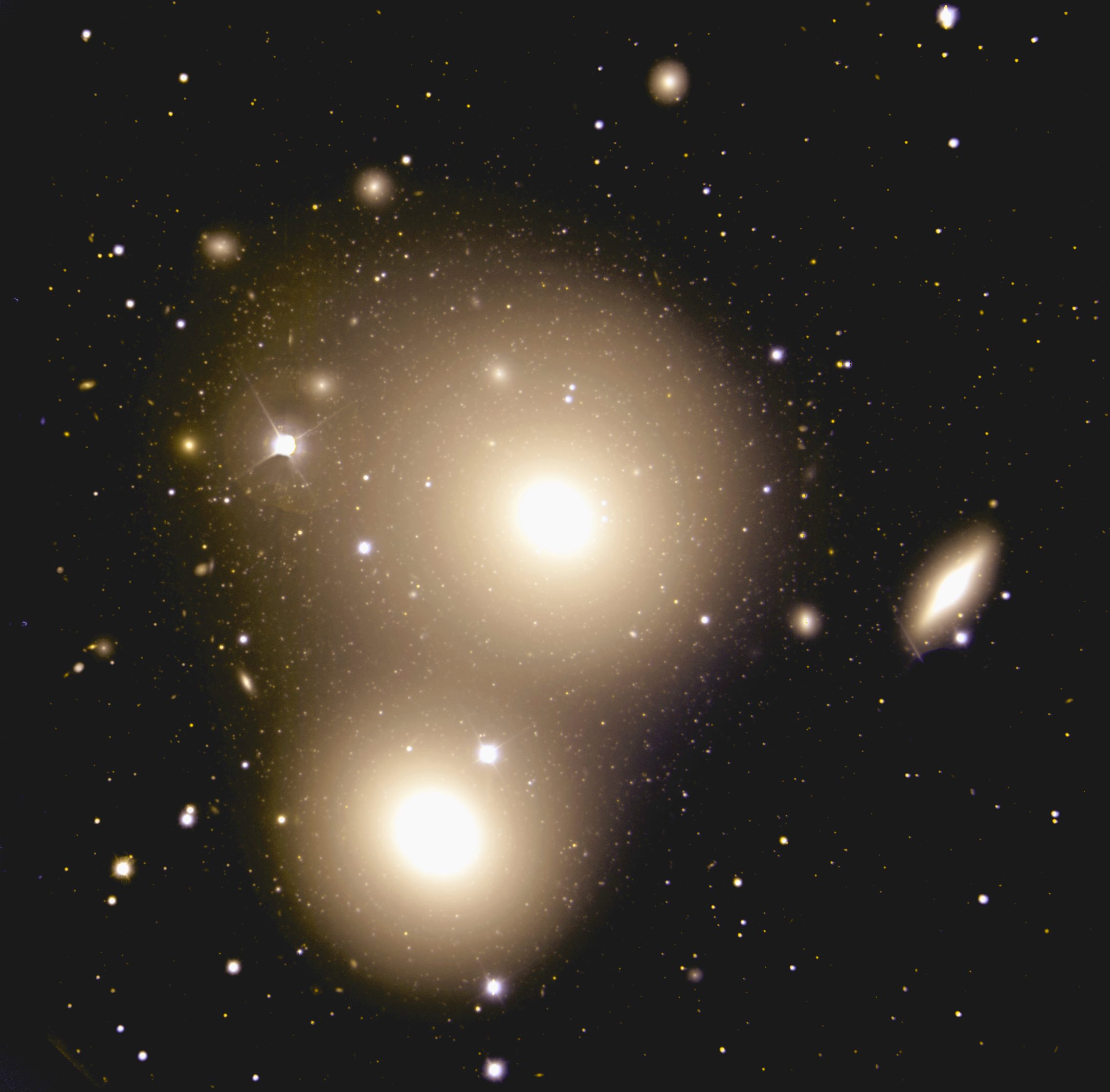and we continue our lesson on extragalactic globulars, with a trifectaduet of talks and an emphasis on colour: red or blue, it is like South Central here sometimes
remember, red is metal rich or old
blue is metal poor or young...
except the reds are actually probably younger than the blues
so it is metal dominated, except for really young clusters
PS: our summary 20 minute talks have an interesting habit of actually lasting 60-90 minutes. I blame that rude chap in the front row who keeps interrupting the speakers with stoopid questions...
as usual the multimedia video and postcasts and slides are online
remember, remember:
Fe peak elements are very uniform within a particular globular
which limits any possible self-enrichment
this is in spite of multiple stellar populations, α-elements and s-process elements, gradients and anti-correlations
famously the colour/metal distribution is bimodal
no mass-metallicity relation seen in Milky Way
there are spatial/kinematic differences - blue are halo population, red are thick disk/bulge
globular clusters are NOT small galaxies (ok. except maybe for ω Cen).
recent HST data suggests there is "blue tilt" in extragalactic systems,
ie that there is a mass-metallicity relation (cf Strader and Brodie et al 2006, also Harris et al) - the more massive blue clusters are redder, and thus more metal rich
Z ~ M0.5 ?
test with deep HST imaging (Waters et al (2009))
best fit Z ~ M0.1
use mixture modeling with bimodal cut in V-I which depends on magnitude (weakly)
neither is actually measuring Z but assuming V-I is a metal proxy
difference due to aperture correction?
deep data allows for resolved cluster
Waters et al recover tilt with uniform aperture correction
only the brightest globulars show the tilt?
so globulars are:
not self-enriched
no dark matter halos
much weaker mass-radius relation
not on M-σ relation (RZ2109 in NGC4472 [ed. hm, I think that is over interpreting - you _could_ have a stellar BH accreting and an IMBH co-existing - arguably more likely to catch a stellar BH accreting in such situation, or not, not trivial])

NGC 4472 - from Hogg's SDSS RC3 selection - pretty pictures galore!
Hm, there's something going on - the galaxies show a mass-metallicity relation
now globulars have Δ Z of ~ 1+ at constant mass
so if the mass-metallicity relation holds, then at best it bifurcates down around few million solar masses, and the blue branch may either go near vertical or it may get stronger depending on who you believe
so the blue globulars are galaxy like, or not
but the red globulars are definitely not.
so there.
which gets us back to formation mechanisms and whether (some) globulars have extended low density dark matter halos, or not
we got late to coffee and cookies, and not only had the string theorists eaten all the good cookies, but they also finished the french roast.
bastards
and we resume...
Jay, he says:
wait, we didn't use V-I, we use g-z and Harris used B-I
see this trend in the blue globs, like Harries...
is it real, or is it memorex?
is the tilt only for the brightest
ie are we seeing the mass-metallicity relation come down upon the little triangle tip of the globular luminosity-colour relation...
shape of the blue tilt, and the mass above which it is seen appears to vary for different galaxies.... hmm
cf Wehner et al 2008 from ground
we are agnostic about what the heck is going on at low masses, but maybe there really is a tilt in the blue branch at high luminosity (masses >~ 2 million solar, or so, or less)
I am sure there are differing opinions on this.
due to self-enrichment?
maybe.
star formation efficiency varies with cluster mass (current mass natch... does that well trace zero age mass)
or gas retention varies with cluster current mass (as proxy for zero age mass)
or both
this of course has been modeled by Bailin and Harris (2008) - this predicts that the red branch should start tilting at high enough a mass, it is just that we don't see globulars that massive, or if we do we don't call them globulars...
Jay has data for M31 suggesting the metal rich (Z >~ -1) are younger (5-10 Gyr)
and the M/L is lower 1 -- 1.5 rather than 2-3 for old blue ones
different IMF??? (submitted)
but they are old,so the IMF must be crazy near solar mass...
this is screwy



About the eds. note on IMBH+stellar BH co existing not sure there are any obvious formation/dynamical evolution channels that will allow that. In an old GC like RZ2109 both would be much more massive than the stars and these folks (Sigurdsson & Hernquist 93) showed how tricky this can be. Now if ed would care to calculate the IMBH + stellar mass BH possibility ...